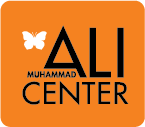 America to Zanzibar: Muslim Cultures Near and Far opens to the public at the Muhammad Ali Center on Friday, May 25th. The family-friendly interactive exhibit, which runs through December 30th, explores the diversity of Muslim cultures in our community, country and the world. The innovative hands-on exhibit, and specially designed programming, will showcase the cultural expressions of various Muslim communities around the world through experiences with art, architecture, travel, trade, design and more. America to Zanzibar will be the largest and longest running exhibit the Ali Center has ever had in its twelve-year history.
America to Zanzibar: Muslim Cultures Near and Far opens to the public at the Muhammad Ali Center on Friday, May 25th. The family-friendly interactive exhibit, which runs through December 30th, explores the diversity of Muslim cultures in our community, country and the world. The innovative hands-on exhibit, and specially designed programming, will showcase the cultural expressions of various Muslim communities around the world through experiences with art, architecture, travel, trade, design and more. America to Zanzibar will be the largest and longest running exhibit the Ali Center has ever had in its twelve-year history.
America to Zanzibar was developed by the Children’s Museum of Manhattan and comes to the Center after a two year stay in New York City.
The “American Home” area within the exhibit will feature Muhammad Ali’s artifacts from the Center’s collection. These items, donated or loaned to the Center’s collection, have never been displayed before. Ali is arguably one of the most famous Muslims in the world, and the items will reflect his sport, humanitarianism and religion.
“The Ali Center is proud to be one of the first museums in the country to exhibit the highly lauded America to Zanzibar exhibit,” said Donald Lassere, President and CEO of the Muhammad Ali Center. “We are at a time in history when there is a growing need to explore, understand, and respect our cultural diversity. America to Zanzibar does this is a way that exposes visitors—especially young ones—to the arts and everyday activities of the Islamic culture in an engaging and thoughtful way.”
America to Zanzibar, designed for children ages 2-10 and their families, but enjoyed by all ages, consists of five major sections: a Global Marketplace, and exhibition areas that display Trade Routes, a Courtyard space, Architecture and an American Home area.
The Global Marketplace features stalls from around the world brimming with sounds, smells and goods, where children can pretend to buy and sell spices from Egypt, ceramics from Turkey and rugs from Morocco. They can also weigh their fresh catch at the Zanzibari fish market, smell Indonesian fruits, serve Tajik tea, and design outfits inspired by the West African tailors.
Visitors learn about the exchange of culture across continents and centuries in the Trade Routes area. Children can climb aboard a replica of a multi-level Indian Ocean dhow (boat) and experiment with navigation techniques, travel to various ports, learn to bargain, and unload goods from around the world. Below deck, they can experience a multisensory exploration of the dhow’s cargo. Children can also decorate a Pakistani truck, then hop in the cab and embark on a pretend trip through the Western Himalayas. They can also climb on top of a life-size camel and journey across the desert.
The Architecture area virtually transports visitors into a series of magnificent, international mosque architectural styles. Breathtaking panoramic images are projected onto a 21-foot curved screen and explore the wide range of aesthetic styles from Asia to Africa and to America. Visitors can also try their hand at drafting their own structures, complete with domes and arches, while gaining insight into architectural traditions from around the Muslim world.
The Courtyard features warm light flooding through a lattice roof. Visitors can explore key elements of design, water and geometric patterns that are central to a traditional Muslim courtyard. At a central fountain, visitors can sample verses from renowned Muslim poets and share how they would make the world a better place–one drop at a time. Children are also encouraged to make music with digital instruments, and compete in a guessing game with authentic objects that illustrate the significance of geometric patterns in Muslim cultures.
The American Home area is a contemporary living room filled with objects donated by American Muslims. Visitors explore the wide variety of American Muslims’ stories through their unique objects, clothing, art and books. They can also learn to write “My name is…” in 21 of the languages spoken by American Muslims, view artistic works by emerging American Muslim artists, and follow the history of Muslims in the U.S. through a visual timeline. As mentioned earlier, Muhammad Ali’s personal items from the Ali Center’s collection will also be on display.
The Ali Center will also produce programming in tandem with the exhibit. More information will follow in the future.
 Weather
Weather Traffic
Traffic @LouisvilleDispatch
@LouisvilleDispatch @LouisvilleDisp
@LouisvilleDisp Subscribe
Subscribe
Leave a Reply